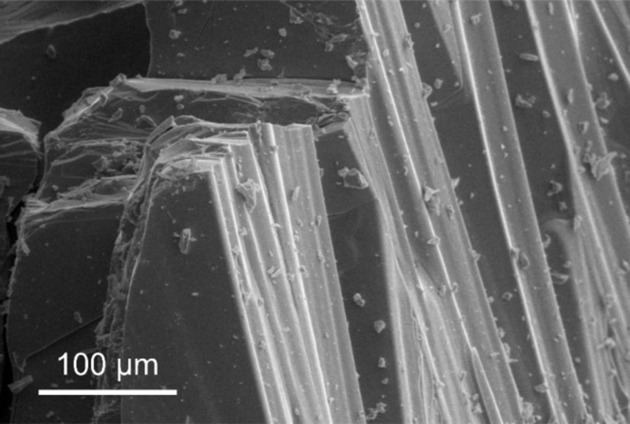From 3D to 2D: structural, spectroscopic and theoretical investigations of the dimensionality reduction in the [PtAl2]d- polyanions of the isotypic MPtAl2 series (M=Ca-Ba, Eu).
STEGEMANN, Frank; BLOCK, Theresa; KLENNER, Steffen; ZHANG, Yuemei; FOKWA, Boniface P. T.; TIMMER, Alexander; MÖNIG, Harry; DOERENKAMP, Carsten; ECKERT, Hellmut; JANKA, Oliver.
STEGEMANN, Frank; BLOCK, Theresa; KLENNER, Steffen; ZHANG, Yuemei; FOKWA, Boniface P. T.; TIMMER, Alexander; MÖNIG, Harry; DOERENKAMP, Carsten; ECKERT, Hellmut; JANKA, Oliver.
 Abstract: Four new MPtAl2 (M=Ca, Sr, Ba, Eu) compounds, adopting the orthorhombic MgCuAl2-type structure, have been synthesized from the elements using tantalum ampoules. All compounds are obtained as platelet-shaped crystallites and exhibit an increasing moisture sensitivity with increasing size of the formal M cation. Structural investigations indicate a pronounced elongation of the crystallographic b-axis, which results in a significant distortion of the [PtAl2]d- polyanion. Within the polyanion, layer-like arrangements can be found with bonding Pt-Al interactions within the slab; the increase of the b-axis can be attributed to increasing Al-Al distances and therefore decreasing interactions between the slabs, caused by the differently-sized formal M cations. While the alkaline earth (M=Ca, Sr) representatives exhibit Pauli paramagnetism, BaPtAl2 shows diamagnetic behavior, finally EuPtAl2 is ferromagnetic with TC=54.0(5) K. The effective magnetic moment indicates that the Eu atoms are in a divalent oxidation state, which is confirmed by 151Eu Mössbauer spectroscopic investigations. Measurements below the Curie-temperature show a full magnetic hyperfine field splitting with Bhf=21.7(1) T. 27Al and 195Pt magic-angle spinning NMR spectroscopy corroborates the presence of single crystallographic sites for the Pt and Al atoms. The large 27Al nuclear electric quadrupolar coupling constants confirm unusually strong electric field gradients, in agreement with the structural distortions and the respective theoretical calculations. X-ray photoelectron spectroscopy has been utilized to investigate the charge transfer within the polyanion. The Pt 4f binding energy decreases with decreasing electronegativity?/?ionization energy of the alkaline earth elements, suggesting an increasing electron density at the Pt atoms. Theoretical investigations underline the platinide character of the investigated compounds by Bader charge calculations. The analysis of the integrated crystal orbital Hamilton population (ICOHP) values, electron localization function (ELF) and isosurface analyses lead to a consistent structural picture, indicating stable layer-like arrangements of the [PtAl2]d- polyanion. Abstract: Four new MPtAl2 (M=Ca, Sr, Ba, Eu) compounds, adopting the orthorhombic MgCuAl2-type structure, have been synthesized from the elements using tantalum ampoules. All compounds are obtained as platelet-shaped crystallites and exhibit an increasing moisture sensitivity with increasing size of the formal M cation. Structural investigations indicate a pronounced elongation of the crystallographic b-axis, which results in a significant distortion of the [PtAl2]d- polyanion. Within the polyanion, layer-like arrangements can be found with bonding Pt-Al interactions within the slab; the increase of the b-axis can be attributed to increasing Al-Al distances and therefore decreasing interactions between the slabs, caused by the differently-sized formal M cations. While the alkaline earth (M=Ca, Sr) representatives exhibit Pauli paramagnetism, BaPtAl2 shows diamagnetic behavior, finally EuPtAl2 is ferromagnetic with TC=54.0(5) K. The effective magnetic moment indicates that the Eu atoms are in a divalent oxidation state, which is confirmed by 151Eu Mössbauer spectroscopic investigations. Measurements below the Curie-temperature show a full magnetic hyperfine field splitting with Bhf=21.7(1) T. 27Al and 195Pt magic-angle spinning NMR spectroscopy corroborates the presence of single crystallographic sites for the Pt and Al atoms. The large 27Al nuclear electric quadrupolar coupling constants confirm unusually strong electric field gradients, in agreement with the structural distortions and the respective theoretical calculations. X-ray photoelectron spectroscopy has been utilized to investigate the charge transfer within the polyanion. The Pt 4f binding energy decreases with decreasing electronegativity?/?ionization energy of the alkaline earth elements, suggesting an increasing electron density at the Pt atoms. Theoretical investigations underline the platinide character of the investigated compounds by Bader charge calculations. The analysis of the integrated crystal orbital Hamilton population (ICOHP) values, electron localization function (ELF) and isosurface analyses lead to a consistent structural picture, indicating stable layer-like arrangements of the [PtAl2]d- polyanion. | |
| Chemistry: a European journal |
| v. 25, n. 45, p. 10735-10747 - Ano: 2019 |
| Fator de Impacto: 5,160 |
| http://dx.doi.org/10.1002/chem.201901867 |  @article={002955936,author = {STEGEMANN, Frank; BLOCK, Theresa; KLENNER, Steffen; ZHANG, Yuemei; FOKWA, Boniface P. T.; TIMMER, Alexander; MÖNIG, Harry; DOERENKAMP, Carsten; ECKERT, Hellmut; JANKA, Oliver.},title={From 3D to 2D: structural, spectroscopic and theoretical investigations of the dimensionality reduction in the [PtAl2]d- polyanions of the isotypic MPtAl2 series (M=Ca-Ba, Eu)},journal={Chemistry: a European journal},note={v. 25, n. 45, p. 10735-10747},year={2019}} @article={002955936,author = {STEGEMANN, Frank; BLOCK, Theresa; KLENNER, Steffen; ZHANG, Yuemei; FOKWA, Boniface P. T.; TIMMER, Alexander; MÖNIG, Harry; DOERENKAMP, Carsten; ECKERT, Hellmut; JANKA, Oliver.},title={From 3D to 2D: structural, spectroscopic and theoretical investigations of the dimensionality reduction in the [PtAl2]d- polyanions of the isotypic MPtAl2 series (M=Ca-Ba, Eu)},journal={Chemistry: a European journal},note={v. 25, n. 45, p. 10735-10747},year={2019}} |



